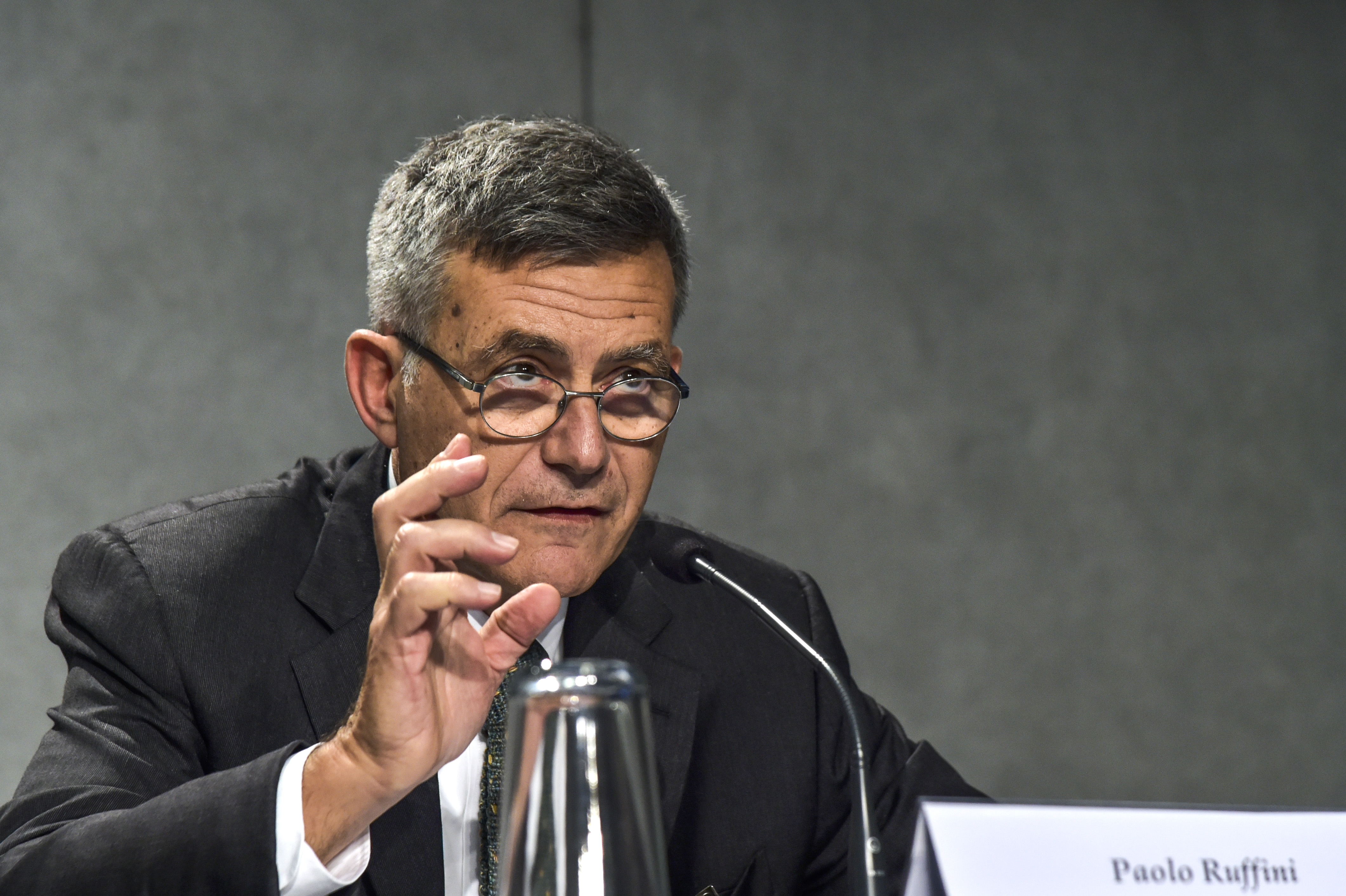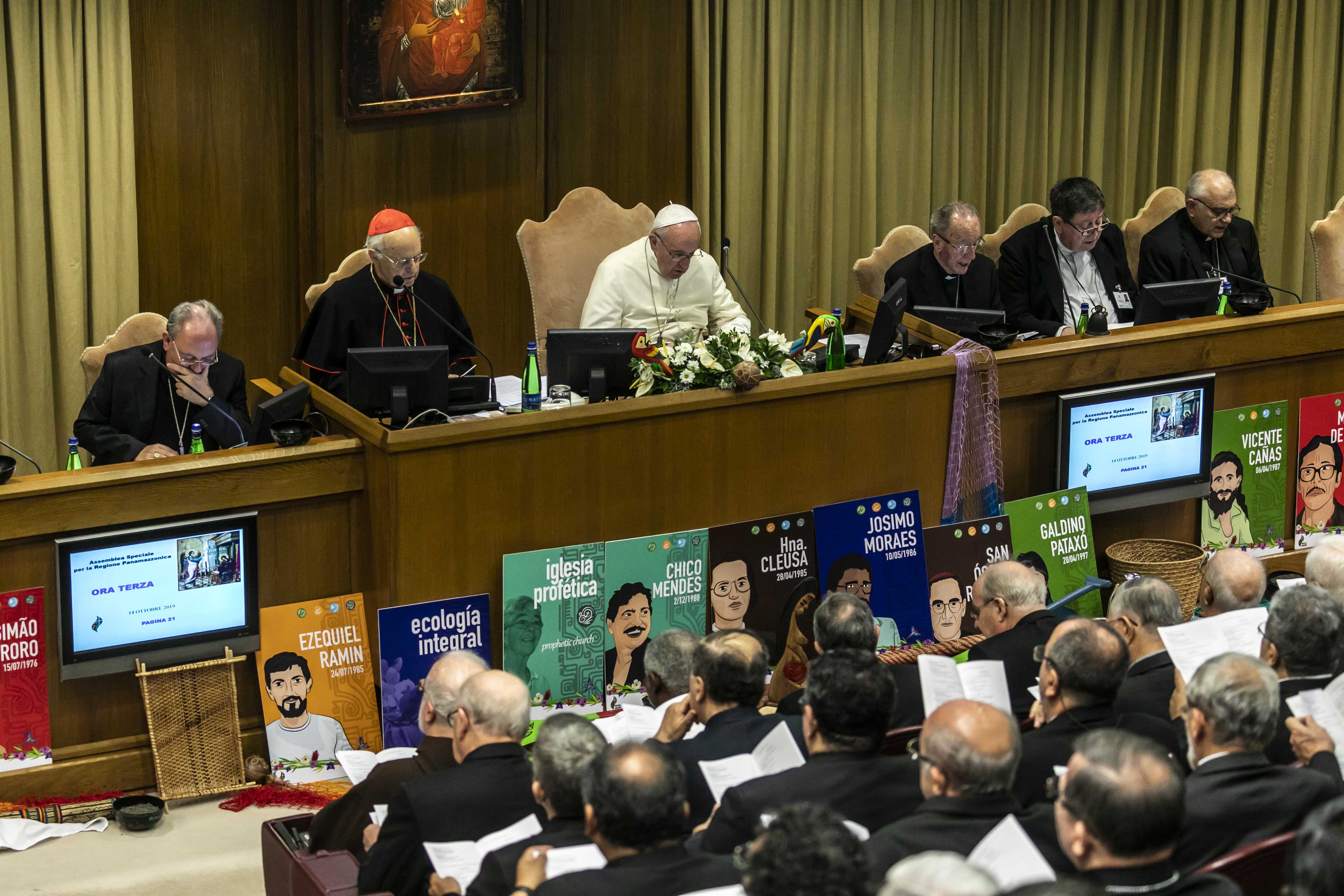#AmazonSynod
“A Synod is not an easy thing to understand, at a time characterized by instantaneousness, by binary logic: on-off, friend-enemy.” Paolo Ruffini, Prefect of the Dicastery for Communication of the Holy See, gave us an overview of the way in which the Synod is communicated and how it is received by communicators: “The Synod is not easy to communicate – he said to SIR – and there is a risk that it will not be understood. At the same time, it is a testimony and, as such, it was received with suspicion by some, with interest and hope by many others, believers and non-believers, by all those who see the Church as a place, perhaps the only place, where the things that happen to us recover meaning, vision. Even if sometimes it takes time to be understood”

“The Synod is the Church on the move. It’s a challenging journey, not a mountain climb.” Paolo Ruffini, Prefect of the Dicastery for Communication of the Holy See, chooses this metaphor in his overview to SIR on the mode of communication of the Synod for the Pan-Amazon region – now reaching its conclusion – and on how it has been received by communicators. “The way in which it communicates is more related to content than to method” he pointed out. He added: “A Synod is not an easy thing to understand, at a time characterized by instantaneousness, by binary logic: on-off, friend-enemy.”
How does the Synod communicate? What are the privileged choices of communication that differentiate it from previous Synods?
I believe that the Synod is communicating the urgency of an integral ecological conversion. It is telling us that everything is connected, that no one is saved alone, that no place is far away and that of none of our brethren can we say ‘I am not my brother’s keeper’. The Synod is telling us that we cannot claim to be Christians, we cannot claim to be Catholics, if we do not work towards the common good, that is, for the good of all.
In this respect also the way in which it communicates is more related to content than to method.
In fact, over and above individual thoughts, there is something that transcends them: it is the communal, communional thought of an assembly that is not a Parliament but a community on the move, a communion, the ecclesial communion. In this respect,
it is communicating a thought as it is being formed, a journey as it is being followed: it’s a process.
If you had to evaluate how the Synod was received by the media, what would you say?
A Synod is not an easy thing to understand, at a time characterized by instantaneousness, by binary logic: on-off, friend-enemy. It’s not easy to communicate and there is a risk that it will not be understood. At the same time, it is a testimony and, as such, it was received with suspicion by some, with interest and hope by many others, believers and non-believers, by all those who see the Church as a place, perhaps the only place, where the things that happen to us recover their meaning, a vision. Even if sometimes it takes time to be understood.

Viri probati and enhancement of the role of women also through specific ministries were the two most debated issues since the opening of the Synod. Can the risk of media polarization on these and other issues be avoided? And how?
It can and it should. The Synod Fathers shared prayers, experiences and proposals on the theme of viri probati, on non-ordained ministries, on the role of the laity and women. The aim was to find the way to be a prophetic, Samaritan Church, animated by the Holy Spirit. Talking about polarization is reductive, to say the least.
Various subjects have been debated in addition to these two issues, which include the ecological crisis, the limits of development, themes relating to inter-religious and intercultural dialogue… I think that the only way to avoid media polarization is to accept the complexities.
It’s not a question of whether to embrace ready-made solutions. The Synod is discussing a territory the size of Europe, with half of Italy’s inhabitants and many different ancestral languages and cultures. It is discussing how to save the Pan-Amazon region and the rest of our Planet from unsustainable development models. It is discussing how to be Church in the Pan-Amazon region and what Amazonia can teach us. There are things that perhaps only those who live there can understand. And there are things that we can and must understand even by living here.
“Everything is connected” is the central theme of Laudato si’. Has the Synod succeeded in convincing people that the serious environmental crisis underway affects everyone and not just Amazonia?
It has certainly succeeded in drawing attention to this truth. It certainly managed to firmly declare that the Church takes responsibility of the environmental question. Just as it did after the industrial revolution with the social question. As L’Osservatore Romano wrote at the opening of the Synod, “if the Church remained silent, she might one day be called to account for her silences, not to the tribunal of the media but to that of her conscience. Not only has the Synod not remained silent on this, it has also reaffirmed what Saint John Paul II had already said: ‘Christians feel that their responsibility within creation and their duty towards nature and the Creator are an essential part of their faith.’”
The Synod is not a Parliament. It does not have decision-making powers. Yet there were high expectations. Will communicators be disappointed?
I don’t think so. But I also don’t see how the question can be addressed in terms of appreciation or displeasure, enthusiasm or disappointment. As if it were a survey. Or a derby of expectations. Not only is it not the meaning of a Synod, it is certainly not the history of the Church. These are not the principles preached by Jesus Christ.
The Synod is the Church on the move. A challenging journey uphill. Not a mountain climb.
Just last Sunday, in his homily, the Pope invited us to ask ourselves: “Is my road uphill or “climbing”?